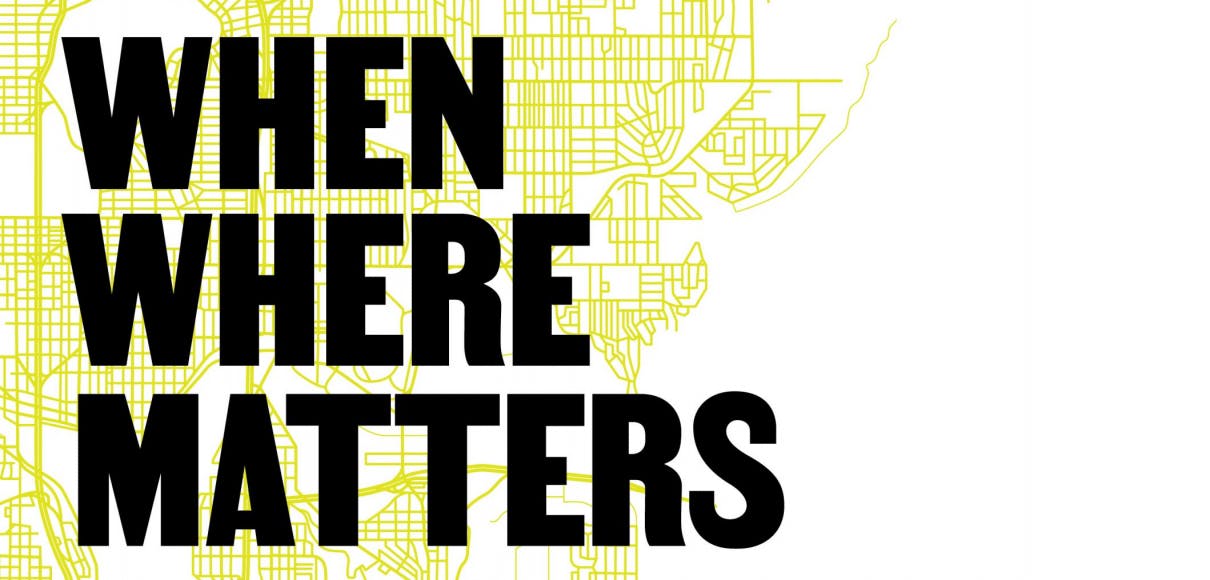In the cold and wet early mornings of this past Seattle winter, my fourth grader would stumble out of bed, wander downstairs to our living room, and curl up in a blanket on the floor with his laptop to log on for school.
He insisted the floor was more comfortable than the makeshift desk we had setup for him by our kitchen table. And he insisted he was very much paying attention in class while lying down and wearing headphones. This became a familiar scene as I would scramble to start my own day in the same space, coffee and laptop in hand, trying to focus on the virtual classroom of college students I would be leading that day.
As I think about the everyday circumstances that framed so much of my family’s learning throughout the past year, I am thankful for the resources my family has to face these personal and educational challenges, but I’m deeply aware that many of my neighbors lacked access to the tools they needed for their families to thrive in our South Seattle neighborhood.
Weeks into the pandemic that closed down in-person classes and moved students into virtual learning spaces last year, some Seattle public schools reported that only 55% of their students were able to access online learning. Some families didn’t have laptops, or Wi-Fi, or the ability to supervise their children at home.
COVID HIGHLIGHTS HISTORIC INEQUITIES
Calls for greater equity in public education, especially in large urban districts like Seattle Public Schools, have been loud and sustained for many decades since at least the Civil Rights Movement. COVID-19 has only served to both highlight and exacerbate the stark and historic inequities in our schools. The longstanding boundaries of race and class that have fragmented our neighborhoods remain stubbornly in place today.
As a whole, Seattle Public Schools face challenges that are mirrored in cities across the nation. They must meet the needs of a large student population that is racially and economically diverse. They manage school properties with aging infrastructures. And Seattle Public Schools face persistent residential segregation and local political feuds that widen the achievement gaps between the haves and the have nots. Add prolonged leadership struggles over funding, labor disputes, or district administration.
What these complex problems look like on the ground is very simple: clear disparities in educational outcomes and experiences of inequity in the classroom. For example, at a Seattle elementary school a few miles north of downtown, 70% of students are white; 5% are English Language Learners; and 7% are low-income. At this school, 90% meet or exceed academic standards. Meanwhile, in a local elementary school just blocks from my home, 95% are students of color; 33% are English Language Learners; and 70% are low-income. At this school, less than 40% are meeting academic standards.

YOUR GEOGRAPHY CAN DEFINE YOUR OPPORTUNITIES
I don’t highlight these contrasts to discredit the hardworking teachers and administrators who are striving for more equitable schools or to diminish the undervalued assets many diverse local schools offer to the community. Rather, these disparities reflect a long history of injustices at the intersection of race and place. For too long, a significant factor in shaping what a classroom looks like, and which educational opportunities are (or are not) available, has been largely determined by its geographic location.
Where you happen to live, or more often, where you can afford to live, reinforces what is possible. Individual responsibility and merit are important, but they remain heavily weighted by one’s ZIP code. When the majority of my neighbors do not have a college degree and live together with large, multigenerational families in homes they do not own, what additional obstacles to effective online learning might their children face?
What are Christians to do in the face of these stark inequities? Thankfully, pursuing equity with my neighbors is not rooted in paternalism or the desire to “save” anyone with my status or problem-solving skills. Instead of swooping in with my academic expertise, my journey as a neighbor requires a posture of humility, curiosity, and friendship. These postures are congruent with Jesus’ own incarnational ministry. He “became flesh and blood, and moved into the neighborhood” (John 1:14, The Message) to be among us.
What greater act of solidarity could we imagine than God drawing near to become our friend and neighbor?
BELONGING DOESN’T REQUIRE SAMENESS
What makes a Christian community Christian? Is it shared belief, religious practices, or implied cultural similarities? While any number of theological arguments could be made here, I want to suggest a different way of understanding communities who call themselves Christian.
In our modern, Western world (admittedly a very large category), affinity is most often paired with homogeneity. Put more simply, much of our social lives is spent equating “community” with a kind of cultural affinity for those who are similar and familiar. Sameness feels safe and desirable. This is universal — some might say even biological — human behavior.
Yet Christians have always carried a different seed of social logic where belonging does not require sameness; Christian belonging should stand in direct contradiction to this human tendency. The earliest Christian communities demonstrated this peculiarity in their social lives where there was [in]famously “neither Jew nor Gentile, neither slave nor free, nor is there male and female, for you are all one in Christ Jesus” (Galatians 3:28).
Race, class, and gender are not erased by Christian baptism, instead they are radically reframed by a new and transformative Christian identity that binds them together on a deeper level.
In the context of schools and neighborhoods, Christian communities cannot simply accept the racial segregation of haves and have-nots as yet another typical ordering of a polarized society. Historically disenfranchised immigrants and working-class families across town cannot remain distant others for whom we feel a tinge of sympathy or charity. That insulating distance may seem normal or even inevitable, but it is not Christian. The self-emptying Savior who draws near to the poor to proclaim the good news of God’s reign invites all people of God into a cross-shaped community.
The closer we draw to God, the more painfully aware we become of those whom God loves who experience injustice. As we pursue equity together, we discover solidarity with our neighbors in friendship and shared proximity to a common good. Finally, our community becomes Christian when we recognize that we belong to each other — not in spite of our cultural or socioeconomic differences — but precisely because of them.
As the school year is drawing to a close, my fourth grader is working every day to get to know his fellow students and how different (and similar) their worlds are to his. He is usually up off the floor and at his desk by lunch time, so that helps, too. Our family is paying attention to the wider needs of our community as the district continues to struggle with equity, but we’re in it together with our church and neighbors, and I wouldn’t want it any other way.
David Leong is an associate professor of missiology at Seattle Pacific University and Seminary. His teaching and research examine the theological meaning of the city and the vocation of the church in urban life. David’s most recent book, Race and Place: How Urban Geography Shapes the Journey to Reconciliation, explores themes of exclusion and belonging in our cities and neighborhoods.




